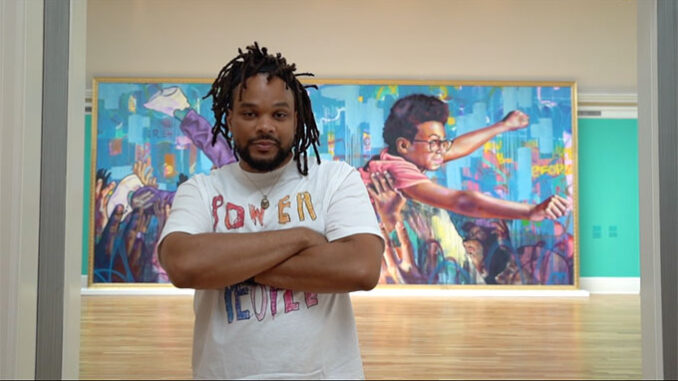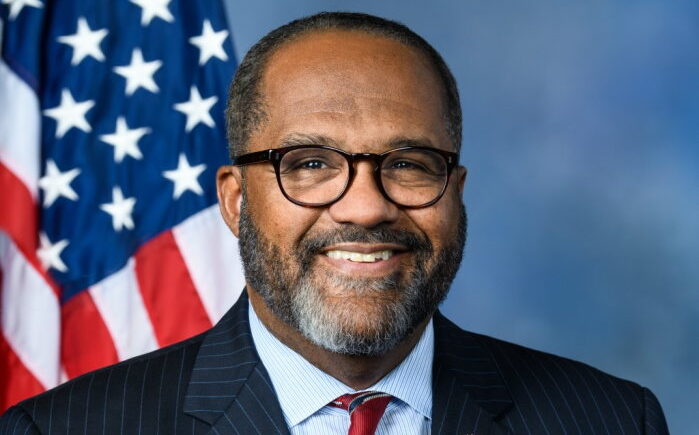
Aviwe DuBois Data News Weekly Contributor
His art can be found all over the city he was born and raised in, but for visual artist Brandan “B-Mike” Odums, his exhibit “NOT Supposed 2-Be Here” at the Newcomb Art Museum of Tulane University is his first solo show in a museum setting. The exhibit explores the idea of who and what kind of art belongs in a museum.
“A part of that show was being hyper-conscious of the trajectory of even being allowed to be there, whether it’s racially, whether it’s our own personal trajectory as an artist, and thinking about how I got to the point from painting legally outdoors to being in a prestigious institution,” Odums said. “Then there’s another layer of not supposed to be here in terms of just thinking about Louisiana as a whole with environmental justice and the way we think about our existence as it relates to the threat of constant water.”
Odums said his work speaks on the social and political issues Black people face in America and the power of social activism. The “NOT Supposed 2-Be Here” Exhibit, which runs until Dec. 13, 2020, includes paintings, sculptures, mixed media, and immersive installations that explore different perspectives on inclusion and identity in art in terms of art, race, place, and accessibility.
“I think innately as being a Black artist, there is a thread of social justice in the work that you do because you recognize that your existence is a form of resistance and to be able to speak your truth is gonna somehow be offensive if not threatening to some audiences,” Odums said.
Due to the current Pandemic, physically viewing the art exhibit is limited to the Tulane community. However, the museum has provided a virtual tour for the wider public on its website, and an artist walk-through video where Odums guides the audience through a 45-minute tour and in-depth look at his work.
“I think that as an artist that comes from working in the public space in terms of streets and murals and things, I think there’s already like a, a barrier of entry that occurs when you work inside a museum or gallery, and these times just sort of increase those barriers in a way,” Odums said.
The physical exhibit allows patrons to get a closer look at the materials and designs an artist uses. “Watching it virtually was a bit different because everything I saw was from his point of view [the way it was shot] I wasn’t seeing it the way that I would, if I was in person,” said Noa Joshua, a Loyola University chemistry major.
While speaking his truth through his art, Odums said he wants to inspire future generations of artists to take a stand with their art and perpetuate change in their communities.
“I do think that there is indeed a role and responsibility that art has to be a reflection of those times,” Odums said. “I think there’s a lot of artists who are more conscious of being that reflection of the moments that we exist in. So, I mean, for me, it’s not like an extra point to put on the work. I think the work exists that way regardless.”
Recommended For You.






Be the first to comment